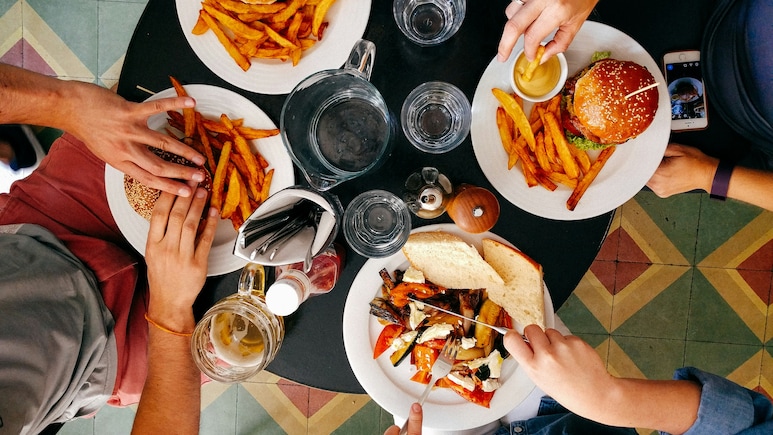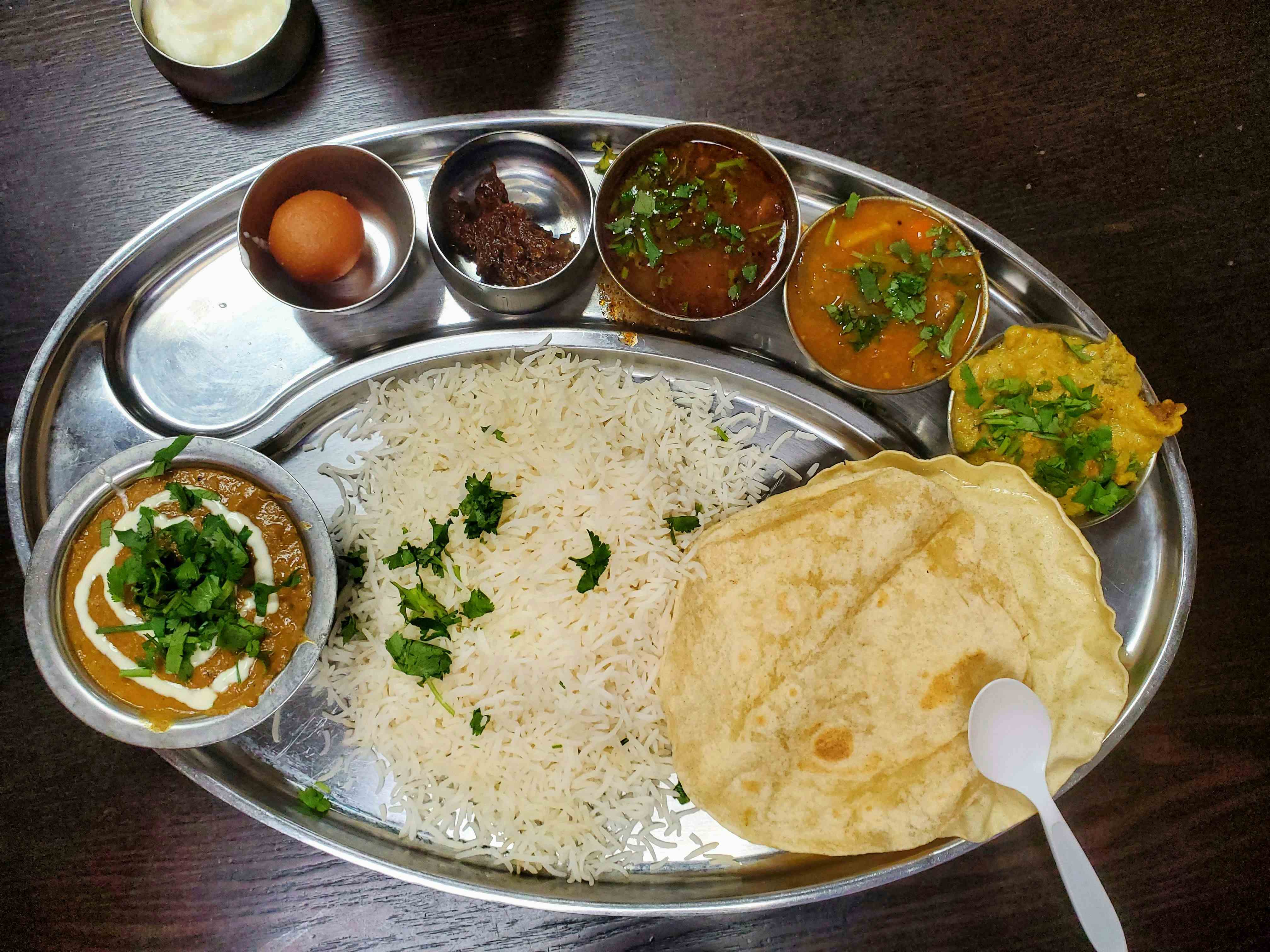
When it comes to food, size does matter.
Less is actually more, and more is, well, a lot more. But did you know that how much we eat is often influenced more by our culture and country than by our personal appetite?
That's why portion sizes across the world differ so dramatically. What's considered normal for one region might look extreme in another. For instance, in the US, it's completely normal to get a giant tub of fried chicken just for yourself. But travel to Asia, and you'll find that in countries like Japan and India, smaller portions of a variety of dishes are the norm.
Interestingly, these traditional approaches are now trickling into fast-food chains too.
A YouTube video by Food Insider illustrates this contrast perfectly, showing how portion sizes vary across major global fast-food chains. In some cases, the differences are over 100 per cent. For example, a large bag of fries in the UK weighs roughly 100 gm, while in the US, the same "large" portion can weigh close to 300 gm. That's not just a difference; that's a whole extra meal.
So, what do portion sizes really look like across the world? Let's take a quick trip through some countries and find out.
The US: Enormous Food Sizes Are Normal
Portion sizes in the US are famously large, whether it's restaurant meals, packaged food, or soft drinks. Fast food culture dominates the country and frequent snacking throughout the day is widely accepted.

In the US portion sizes are generally large. Photo: Unsplash
Most meals rely heavily on ultra-processed, calorie-dense, and nutrient-poor foods. Convenience often wins over nutrition, and the culture of supersized meals makes overconsumption easy.
Unsurprisingly, this has contributed to the US having one of the highest obesity rates in the world.
France: Indulgence Meets Mindfulness
The French enjoy their rich foods - think cheeses, breads, wine, and buttery pastries - but they do so in moderation. Portion sizes are generally small, and meals are slow and social affairs rather than rushed necessities.
Snacking is rare and eating at fixed times is the norm. Most French people still prefer fresh, home-cooked meals, even in the busiest cities.
This balance helps explain France's surprisingly low obesity rate despite the indulgent menu.
Italy: Fresh, Social And Portion-Aware
Italy may be known for being home to pizza and pasta, but what's often overlooked is that the portions consumed in the country are small and meals are shared. The emphasis is on quality, not quantity. Fresh ingredients, seasonal produce, and homemade recipes still form the foundation of Italian cuisine.

In Europe portion sizes are generally small. Photo: Unsplash
Italians also eat slowly, savouring each bite, which naturally reduces the tendency to overeat.
Brazil: Tradition In Balance
Traditional Brazilian meals strike a nutritional balance: rice, beans, vegetables, and moderate servings of meat are the norm. Meals are usually enjoyed at home, served on smaller plates, and eaten together as a family.
However, in urban areas of Brazil, processed and convenience foods are becoming more popular, and this shift is affecting portion sizes and public health.
Mexico: The Transition From Balance To Bulk
Like Brazil, Mexico's traditional meals were once family-style and well-balanced, featuring corn, beans, vegetables, and small amounts of meat. But the rapid rise in fast food and processed snacks has changed that. Portion sizes have grown significantly, particularly in urban fast-food outlets.
Sugary drinks and high-fat, energy-dense foods are now a staple in many households - and obesity rates have climbed up as a result.
Japan: Mindful Eating Through 'Hara Hachi Bu'
Japanese meals are works of art. Small, beautiful portions featuring rice, vegetables, tofu, and fish. Processed foods are minimal, and meals are eaten slowly. The cultural principle of Hara Hachi Bu - which roughly translates to eating until you're 80 per cent full - encourages people to stop before they feel stuffed.

Japanese are known for their mindful eating. Photo: Unsplash
The use of smaller plates, chopsticks and a slower eating pace also helps keep portions in check. No surprises then, that Japan has one of the lowest obesity rates in the world.
India: A Grain And Veggie-Based Legacy
Indian meals are traditionally built around grains such as rice or wheat, clubbed with lentils, seasonal vegetables, and dairy products. Meals are home-cooked and balanced with a variety of components. Think of a classic Indian thali, which includes curries, dry veggies, pickles, salads, and a digestive drink such as chaach/lassi.

An Indian Thali. Photo: Unsplash
The small serving sizes of each item naturally limits overall intake. However, rising urbanisation and increasing access to processed foods are beginning to shift eating patterns - and not in a good way.
The UK: Enter Convenience
In the UK, portion sizes have increased over time, both at home and restaurants. With a fast-paced lifestyle, convenience often trumps cooking - leading to a rise in ready-to-eat meals, snacks, and sugary beverages. Supermarket deals and portion upgrades make it easier to consume more than needed without even noticing.
This has contributed to moderately high obesity levels in the country.
For instance, the US obesity rate is substantial, with nearly 42.4% of adults classified as obese. Some attribute this to larger portion sizes.
The Arab Nations: The Communal Experience
In most Arab cultures, sharing meals is a communal experience and an expression of hospitality. Food is often served in large dishes at the center of the table, and everyone eats together, reinforcing social bonds and family connections.
Rather than individual plated portions, meals-especially main ones-are presented in shared platters, allowing each person to serve themselves and adjust their portion size. It's typical for hosts to encourage guests to eat more and to offer the choicest pieces-a sign of generosity and respect
Why Does It Matter?
The main takeaway here? In countries where portion sizes are traditionally small and meals are eaten mindfully; rates of obesity and lifestyle-related diseases tend to be lower. Conversely, in places where bigger is better, when it comes to food, health problems are on the rise.
So, what drives the difference in portion sizes across countries? It goes far beyond just appetite. Culture, tradition, social norms and even tableware influence how much people eat. From chopsticks and shared plates in Japan to the convenience-driven culture of the US, every country tells its own story, not just on the plate, but through the portion.
Track Latest News Live on NDTV.com and get news updates from India and around the world

